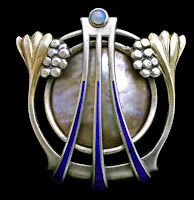 W. B. Yeats
W. B. Yeats
Imitated from the Japanese (1938)
A most astonishing thing
Seventy years have I lived;
(Hurrah for the flowers of Spring
For Spring is here again.)
Seventy years have I lived
No ragged beggar man,
Seventy years have I lived,
Seventy years man and boy,
And never have I danced for joy.
•
 Imitated from the Japanese. The speaker celebrates the coming of spring and finds It ‘astonishing’ that he has lived through seventy years without ‘danc[ing] for joy’. Yeats included an earlier version of the poem in a letter to Dorothy Wellesley in December 1936. He wrote there that he had ‘made’ the poem ‘out of a prose translation of a Japanese Hokku in praise of Spring’, but the work is nothing like ‘hokku’, prose translation or otherwise, and does not remind of anything in Japanese tradition.
Imitated from the Japanese. The speaker celebrates the coming of spring and finds It ‘astonishing’ that he has lived through seventy years without ‘danc[ing] for joy’. Yeats included an earlier version of the poem in a letter to Dorothy Wellesley in December 1936. He wrote there that he had ‘made’ the poem ‘out of a prose translation of a Japanese Hokku in praise of Spring’, but the work is nothing like ‘hokku’, prose translation or otherwise, and does not remind of anything in Japanese tradition.
 Finneran in The Collected Poems of W. B. Yeats, rev. ed. (New York: Collier, 1989) finds an ‘apparent source’ in Miyamori’s Anthology of Haiku, most likely, he suggests, ‘My Longing After Departed Spring’, by Emori Gekkyo, but the similarity is not striking. Yeats’s poem is nine lines about joy occasioned by the arrival of spring, Gekkyo’s two lines about longing occasioned by its departure. The ‘prose translation of a . . . Hokku’ from which Yeats worked, then, has yet to be identified.1 [this site, the margins, is so incredible; i find myself returning again and again.]
Finneran in The Collected Poems of W. B. Yeats, rev. ed. (New York: Collier, 1989) finds an ‘apparent source’ in Miyamori’s Anthology of Haiku, most likely, he suggests, ‘My Longing After Departed Spring’, by Emori Gekkyo, but the similarity is not striking. Yeats’s poem is nine lines about joy occasioned by the arrival of spring, Gekkyo’s two lines about longing occasioned by its departure. The ‘prose translation of a . . . Hokku’ from which Yeats worked, then, has yet to be identified.1 [this site, the margins, is so incredible; i find myself returning again and again.]
(barbier, gekko, zumbusch: they all dance for spring)
Labels: dance, Gekko Ogata, georges barbier, ludwig von zumbusch, poetry, william butler yeats


 doesn't the internet seem like just one big wondrous museum some days?
doesn't the internet seem like just one big wondrous museum some days?

 today i went to the 'museum of jewelry,' the 'bibliotech d'adornment', the 'history of lacquer university,' and ebay.
today i went to the 'museum of jewelry,' the 'bibliotech d'adornment', the 'history of lacquer university,' and ebay.

 if you only go to look, all the commerce in the world becomes a gift.
if you only go to look, all the commerce in the world becomes a gift.




















